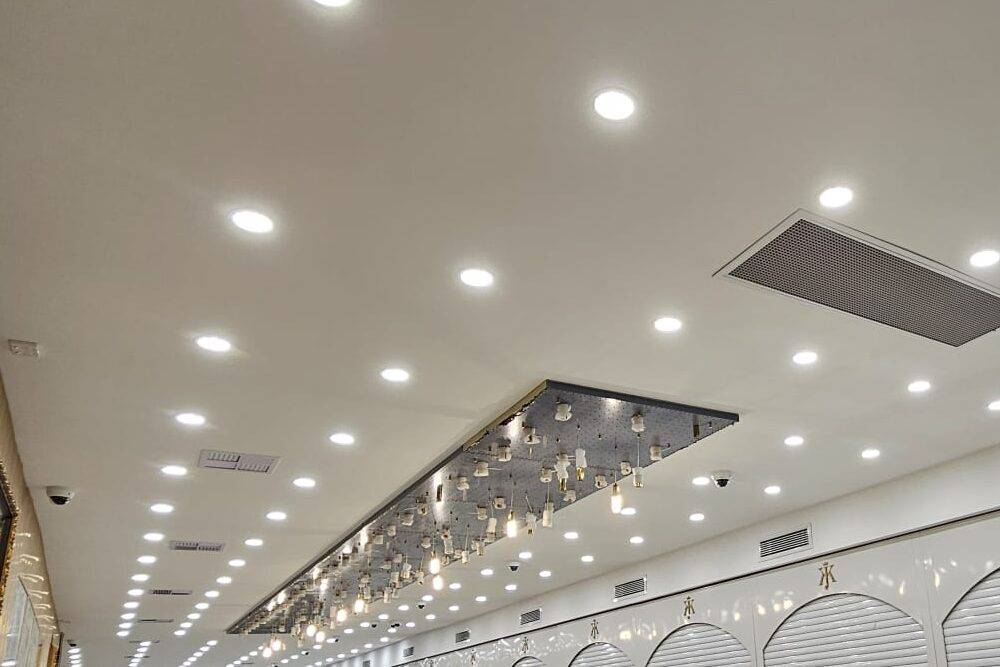How Long Do LED Lights Last?
Exploring LED Lifespan, Longevity & Cost Across Melbourne and Beyond
As we step into 2025, LED lights continue to dominate the Australian lighting market—and for good reason. Their energy efficiency, long life, and low maintenance have made them a go-to lighting solution across homes, offices, retail spaces, and commercial properties throughout Melbourne and the rest of the country. But one question keeps surfacing among homeowners and business owners alike:
How long do LED lights actually last in 2025 in Australia?
Let’s break it down—by lifespan, light quality, durability, and local conditions—to give you a complete understanding of LED lighting longevity and why more Australians are making the switch this year.
Understanding LED Lights and Their Lifespan
LED stands for Light Emitting Diode—a lighting technology that, unlike traditional incandescent bulbs, doesn’t rely on heating a filament to produce light. Instead, LEDs use semiconductors that emit light when an electric current passes through. This innovation is a major reason LED bulbs outlast their traditional counterparts.
LED Light Lifespan Explained
The average LED light lifespan in Australia in 2025 is 25,000 to 50,000 hours. That translates to roughly 10 to 17 years if the light is used for 8 hours a day.
Lifespan of an LED vs Traditional Bulbs:
- Incandescent bulbs: 750 to 2,000 hours
- Halogen bulbs: 2,000 to 4,000 hours
- Compact Fluorescent Lights (CFLs): 8,000 to 10,000 hours
- LEDs: 25,000 to 50,000 hours
Clearly, LED longevity is in a different league.
Factors That Affect How Long LED Lights Last
While the technology itself offers a long life, several external and internal factors can influence how long LED bulbs last in practical use.
1. Quality of the LED Bulb
Not all LED lights are created equal. Lower-quality, cheap imports often use poor components, resulting in early failure. Reputable brands and local suppliers in Melbourne ensure compliance with Australian electrical standards, offering LED bulbs with a higher life expectancy.
2. Heat Management
LEDs are sensitive to heat. Good LED designs include heat sinks that dissipate warmth, especially in enclosed fittings like LED downlights. If LEDs overheat—common in improperly ventilated ceilings—they may fail sooner.
3. Usage Patterns
A light used continuously versus intermittently can experience different LED light longevity outcomes. Still, LEDs are better than traditional bulbs at handling frequent switching on and off.
4. Electrical Conditions
Voltage spikes and poor wiring can reduce LED lighting lifespan. Melbourne electricians often recommend surge protectors or stable power systems to extend the life of your fittings.
5. Environmental Conditions
LEDs used outdoors—especially in harsher climates like Darwin or rural NSW—face more temperature and moisture exposure. That’s why IP-rated LED light bulbs are essential for outdoor applications.
How Long Do LED Downlights Last?
One of the most common applications of LED technology in Australian homes is ceiling LED downlights. These lights are compact, energy-saving, and aesthetically pleasing.
In 2025, LED downlights in Melbourne generally last between 35,000 to 50,000 hours, depending on the quality of the fitting and ventilation in the ceiling cavity.
For example:
- Entry-level LED downlight lifespan: 25,000 – 30,000 hours
- Mid-tier downlights: 40,000 – 45,000 hours
- Premium LED downlights (e.g. dimmable, smart): 50,000+ hours
LED Bulb Lifespan Across Australia – Price & Durability
While the technology remains consistent, there are some regional variations in LED light longevity due to climate and usage habits.
| State | Average LED Lifespan | Estimated Cost per Bulb (2025) |
|---|---|---|
| VIC (Melbourne) | 25,000 – 50,000 hrs | $8 – $25 |
| NSW (Sydney) | 25,000 – 45,000 hrs | $9 – $26 |
| QLD (Brisbane) | 20,000 – 40,000 hrs | $9 – $24 |
| WA (Perth) | 25,000 – 50,000 hrs | $8 – $23 |
| SA (Adelaide) | 25,000 – 45,000 hrs | $8 – $22 |
| NT (Darwin) | 20,000 – 35,000 hrs | $10 – $28 |
| TAS (Hobart) | 25,000 – 45,000 hrs | $9 – $24 |
Keep in mind: LED costs have dropped significantly in the last five years. In 2025, even smart LED bulbs with Wi-Fi capabilities can be found under $30, making long-lasting, efficient lighting more accessible than ever.
LED Lights vs Incandescent Bulbs – Why the Difference Matters
Incandescent and halogen bulbs have significantly shorter lifespans, mostly due to their reliance on fragile filaments that burn out over time. LEDs, in contrast, don’t “burn out” the same way. Instead, they gradually dim, reaching about 70% brightness after their rated lifespan.
This is called L70 rating, and it’s one of the ways LED bulb lifespan is measured today.
So, even after 30,000 hours, your LED light bulb in Melbourne won’t go dark—it’ll simply be a little less bright.
Common Questions About LED Longevity in Australia (2025)
How long do LED light bulbs last in Melbourne homes?
Typically, LED light bulbs in residential settings across Melbourne last between 25,000 to 50,000 hours, depending on the product quality and usage conditions.
Can LED lights last 20 years?
Yes. In many homes and commercial environments where lights are used around 6 hours per day, LEDs can last up to 20 years before needing replacement.
Do LED lights burn out like traditional bulbs?
Not exactly. Instead of a sudden burnout, LEDs fade slowly over time—gradually delivering less brightness while still operating.
Are LED lights worth the investment in 2025?
Absolutely. With long life, reduced maintenance, and lower power bills, LEDs offer a strong return on investment for both homes and businesses.
Can you replace any bulb with LED?
In most cases, yes. LED bulbs are now available in almost all standard bases, including bayonet, Edison screw, GU10, and more. Just ensure your fittings are compatible, especially for dimmable LED lights.
LED Longevity: Real-World Benefits for Melbourne Property Owners
1. Reduced Maintenance
If you’re managing a commercial space or multi-unit residential building, fewer bulb replacements mean less labour and fewer disruptions.
2. Lower Energy Bills
LEDs use up to 80% less electricity than incandescent lights. Over a decade, this leads to significant savings—especially in homes using LED ceiling globes or LED strip lighting.
3. Better Environmental Impact
The long lifespan of LEDs means fewer bulbs in landfills, lower energy consumption, and a smaller carbon footprint.
4. Safer Lighting Choice
No filaments, no mercury, and less heat generation. That makes LEDs safer for homes with kids, pets, or sensitive electronics.
Why Melbourne Homes and Businesses Are Switching to LED in 2025
Across the greater Melbourne area, from Carlton to Cranbourne, businesses and households are embracing LED light bulbs not just for longevity, but also for performance, reliability, and modern lighting design.
- Architects and designers are integrating LED strip lighting and spotlights into modern builds.
- Retailers are using high-lumen LED lights to enhance product displays.
- Homeowners are upgrading kitchen and bathroom lighting with LED downlights and energy-efficient ceiling fixtures.
Final Word: How Long Do LED Lights Last in 2025 Australia?
In summary, LED lights in Australia offer a reliable, long-lasting solution for residential, commercial, and industrial lighting. With lifespans often exceeding 25,000 to 50,000 hours, they outperform every other lighting type available today.
For Melbourne locals looking to upgrade, LED lights not only deliver energy efficiency but also reduce your replacement cycle, maintenance costs, and environmental impact.
If you’re ready to make the switch or need help choosing the right LED lighting for your space, contact your trusted Melbourne-based team at Eleco Electrical—your go-to experts for reliable, future-proof lighting solutions across Victoria.
FAQs About LED Lighting in Australia – 2025
Q: How long should LED light bulbs last in a typical Australian home?
A: On average, between 10 to 15 years, depending on usage and quality.
Q: What’s the lifespan of an LED compared to a halogen?
A: Halogen bulbs last 2,000–4,000 hours. LEDs last 25,000–50,000 hours—more than 10 times longer.
Q: How do I know if my LED light is failing?
A: Gradual dimming, flickering, or colour shifts are signs your LED globe may be near the end of its life.
Q: Can LED lights be used with dimmer switches?
A: Yes, but only if the LED bulbs are dimmable and matched with compatible dimmer systems.
Q: Do LED lights get hot?
A: Not like traditional bulbs. LEDs stay relatively cool, making them safer and more energy-efficient.
Q: Are LED bulbs available in all colours and tones?
A: Absolutely. From warm white to daylight cool, LED bulbs come in a range of colour temperatures and styles, including strip lighting, downlights, ceiling fixtures, and more.
Let your lighting last longer. Choose LEDs—and enjoy brighter, better, and smarter spaces across Melbourne and beyond.
Looking to upgrade your lighting setup in 2025?
Contact Eleco Electrical today for tailored LED lighting solutions across homes and businesses in Melbourne. From design to installation, we’ve got your space covered.


